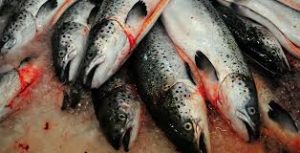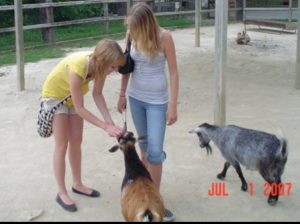Several countries’ studies have suggested that a mutated and very aggressive form of the listeria bacteria is raging in an M.V.Wool fish plant located near Harku, just outside of Tallinn. According to the latest info, 26 people across Europe have already contracted the bacteria, six of whom have died — among them nine people in Estonia, two of whom have died, according to a longer story to air on ETV investigative program Pealtnägija on Wednesday night.
 Genetic analysis ordered by the Veterinary and Food Board (VTA) revealed that the aggressive and contagiousST1247 strain of listeria can be traced back to the factory owned by M.V.Wool, Estonia’s largest fish producer. Bacteria from this specific strain have been found both in the plant’s production building as well as from people that have fallen ill.
Genetic analysis ordered by the Veterinary and Food Board (VTA) revealed that the aggressive and contagiousST1247 strain of listeria can be traced back to the factory owned by M.V.Wool, Estonia’s largest fish producer. Bacteria from this specific strain have been found both in the plant’s production building as well as from people that have fallen ill.
VTA deputy director general Olev Kalda said that the fish plant is under the watchful eye of inspectors, and each product batch to leave the plant is currently being thoroughly inspected.
“Clearly some fairly innocuous listeria monocytogenes ended up at that business, possibly three or four years ago, but it’s possible that as a result of insufficient [cleaning] measures, this mutation occurred there and it developed into a persister strain, i.e. a strain unique only to that specific place,” Kalda explained.
M.V.Wool factory owner and board chairman Mati Vetevool has categorically denied that the dangerous bacteria came from their factory, pointing the finger instead at Norwegian and Finnish farms from which he claims the bacteria ended up in their plant.
 “I absolutely do not agree that this bacteria is our bacteria,” Vetevool said. “It comes in from the fish farm; it hasn’t developed here. We can also end up stuck with a strain originating from a fish farm. Every night, our fish plant is thoroughly washed, and we destroy absolutely all bacteria in the cleaning process. It’s not possible that we are poisoning anyone. Nothing of the sort is possible — this is simply sheer libel.”
“I absolutely do not agree that this bacteria is our bacteria,” Vetevool said. “It comes in from the fish farm; it hasn’t developed here. We can also end up stuck with a strain originating from a fish farm. Every night, our fish plant is thoroughly washed, and we destroy absolutely all bacteria in the cleaning process. It’s not possible that we are poisoning anyone. Nothing of the sort is possible — this is simply sheer libel.”
According to Kalda, however, Vetevool’s story doesn’t add up.
“The studies show that this specific strain has been found only in products to be produced by this company, it has been found in this company’s environment — i.e. in its production facilities, on its production equipment — but it, as I mentioned, did not enter this company in this form, with this current strain of DNA,” the VTA official said.












